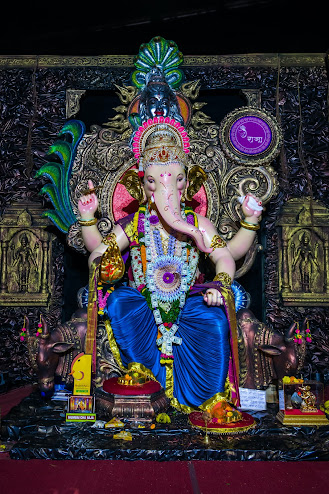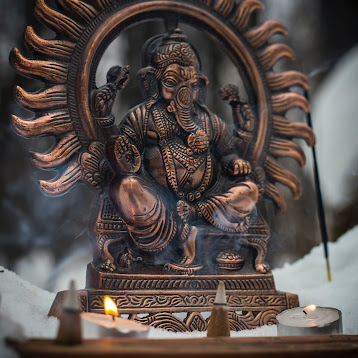History of Khatu Shyam ll Khatu Shyam Temple 2023
The Origin of Khatu Shyam The Legend of Khatu Shyam The Temple of Khatu Shyam The Festivals Celebrated at Khatu Shyam Temple Devotees and their Faith Miracles and Beliefs The Spiritual Significance of Khatu Shyam The Influence of Khatu Shyam on Culture and Society Khatu Shyam in Modern Times Prominent Temples and Shrines Dedicated to Khatu Shyam The Spread of Khatu Shyam Worship Stories of Personal Transformation The Eternal Message of Khatu Shyam Khatu Shyam, a revered deity in Hindu mythology, holds a special place in the hearts of millions of devotees. Also known as Shyam Baba, Barbarika, or Krishna Khatu Shyamji, he is considered to be the embodiment of truth, devotion, and selfless love. This article delves into the history and significance of Khatu Shyam, unraveling the tales that have captivated generations. The Origin of Khatu Shyam The roots of Khatu Shyam’s history can be traced back to the age of the Mahabharata, an ancient Indian epic. Khatu Shyam was the son of Ghatotkacha, the brave warrior prince and Lord Krishna’s grandson, and Kamkantakatai, the daughter of Bhagwan Krishna’s elder brother, Balarama. Born with divine blessings and exceptional valor, Khatu Shyam was destined to play a crucial role in the Kurukshetra War. The Legend of Khatu Shyam Khatu Shyam’s legend revolves around his act of offering his head as a charitable gift to Lord Krishna during the Kurukshetra War. His devotion was so unwavering that he vowed to support whichever side required his help, and hence, he promised to remain neutral. In a test of devotion, Lord Krishna sought his head as an offering. Khatu Shyam willingly complied, setting an example of utmost sacrifice and dedication. The Temple of Khatu Shyam The Khatu Shyam Temple, located in the Sikar district of Rajasthan, India, is a significant pilgrimage site for devotees. Constructed using beautiful white marble, the temple exudes an aura of serenity and devotion. The main sanctum houses the idol of Khatu Shyam, adorned with intricate jewelry and colorful clothes, captivating all who visit. The Festivals Celebrated at Khatu Shyam Temple The temple witnesses a grand celebration during the Phalguna Mela, held in the month of February or March, attracting pilgrims from across the country. The auspicious day of Janmashtami, the birth anniversary of Lord Krishna, is also celebrated with great fervor, drawing devotees in large numbers. Devotees and their Faith Devotees of Khatu Shyam come from diverse backgrounds and regions, united in their faith and devotion. Many believe that he fulfills the wishes of his true devotees, providing them with guidance and protection. The power of Khatu Shyam’s blessings is often narrated in the form of heartwarming anecdotes and tales of divine interventions. Miracles and Beliefs The folklore surrounding Khatu Shyam is replete with miraculous incidents, reinforcing the belief in his divine presence. Stories of healing, protection, and providence have been passed down through generations, instilling faith in the hearts of believers. The conviction in these tales has been a driving force for millions of devotees. The Spiritual Significance of Khatu Shyam Khatu Shyam represents the essence of selfless devotion and the willingness to sacrifice for a higher purpose. His story resonates with those seeking spiritual growth, emphasizing the importance of unwavering faith and surrender to a higher power. The Influence of Khatu Shyam on Culture and Society Khatu Shyam’s influence extends beyond the spiritual realm, impacting various aspects of culture and society. His teachings inspire individuals to uphold righteousness and embrace compassion, fostering a sense of harmony and unity. Khatu Shyam in Modern Times Even in modern times, the devotion to Khatu Shyam continues to thrive. With the advent of technology, the message of Khatu Shyam has reached a global audience, transcending geographical boundaries. Prominent Temples and Shrines Dedicated to Khatu Shyam Apart from the main temple at Khatu Shyam, several other temples and shrines have been erected worldwide to honor the deity. These sacred places attract devotees seeking solace and divine blessings. The Spread of Khatu Shyam Worship The devotion to Khatu Shyam is not confined to India alone. Many international followers, especially in countries with a significant Indian diaspora, worship Khatu Shyam with equal ardor. Stories of Personal Transformation Devotees often share stories of how their lives have been transformed positively through their connection with Khatu Shyam. The deity’s divine intervention is believed to have brought about miraculous changes in people’s lives. The Eternal Message of Khatu Shyam Khatu Shyam’s history carries an eternal message of love, sacrifice, and devotion. It reminds humanity to look beyond material pursuits and embrace spiritual values that lead to inner peace and contentment. In conclusion, the history of Khatu Shyam is a tapestry of devotion, sacrifice, and divine blessings. The tales of his miracles continue to inspire and instill faith in the hearts of millions. As a beloved deity, Khatu Shyam’s presence in the cultural and spiritual landscape of India is profound, and his message of love and selflessness remains timeless. FAQs: 1.Is Khatu Shyam only worshipped by Hindus? Khatu Shyam’s devotees come from various religious backgrounds, and his message of love and devotion is embraced by people of all faiths. 2.What is the significance of the Phalguna Mela? The Phalguna Mela is an annual festival at the Khatu Shyam Temple, where pilgrims gather to celebrate and seek blessings. 3.Are there any other names for Khatu Shyam? Yes, Khatu Shyam is also known as Shyam Baba, Barbarika, or Krishna Khatu Shyamji. 4.What are some famous miracles associated with Khatu Shyam? There are numerous miraculous stories, including healing the sick, providing protection during calamities, and fulfilling devotees’ wishes. 5.Where can I find more information about Khatu Shyam? To know more about Khatu Shyam’s history and teachings, you can visit the Khatu Shyam Temple or explore reputable sources online.
History of Khatu Shyam ll Khatu Shyam Temple 2023 Read More »








